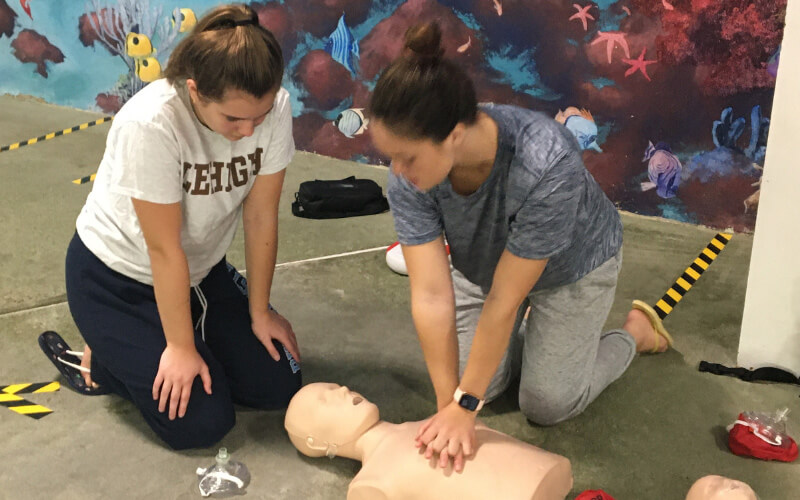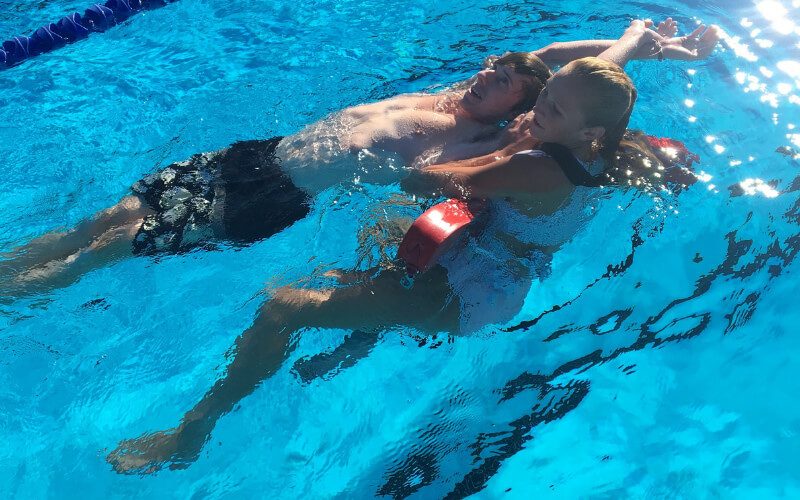Accidents can happen anytime and anywhere. Right when you least expect it and probably at the worst possible time. Without someone with proper knowledge in giving immediate medical attention or CPR, lives could be lost.
CPR helps keep oxygenated blood flowing to the brain and other crucial organs until normal heart rhythm is restored.
This is the core reason why investing your time in CPR training is extremely beneficial. Cardiopulmonary resuscitation, better known as CPR, should be everyone’s base emergency training.
Benefits of CPR Training
It Saves Lives.
The number one cause of death for children ages 4 and under is drowning. CPR certification for parents and childcare providers is necessary to decrease loss of life. Drowning is preventable by following the safer3: safer water, safer kids, safer response.

Additionally, according to the CDC, heart disease is the leading cause of death in the United States, with over 600,000 deaths each year. CPR is essential in helping heart disease victims. Promptly and adequately performed CPR can dramatically improve someone’s chance of survival.
CPR Can Prevent Brain Death
Between four and six minutes after the heart stops beating, brain death occurs. CPR helps keep blood flowing and provides oxygen to the brain and other important organs. It gives the victim a better chance of a full recovery.
Reduces Recovery Time of Patients
Chances of survival double if CPR is administered within the first two minutes of cardiac arrest. It means the victim will make it to the hospital in time. The longer the patient suffers from the condition, the bigger the toll it takes on their body.
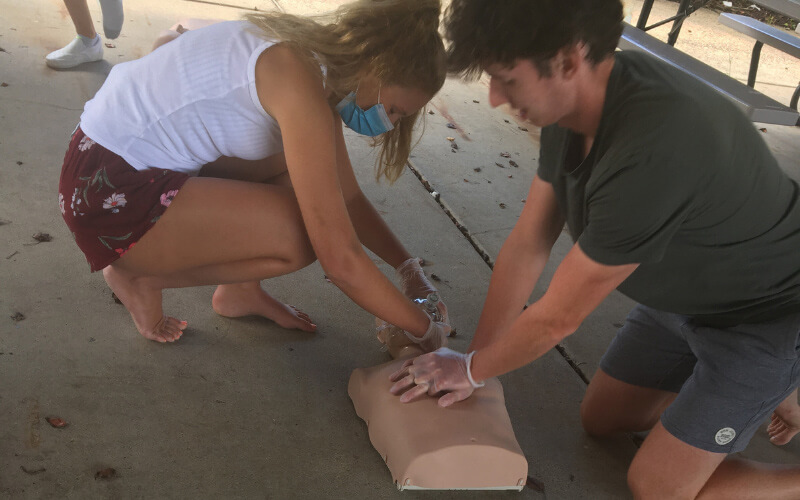
Therefore, if you administer CPR seconds after the cardiac arrest, the body will suffer less and can resume normalcy in a short time. Additionally, since the heart and body suffer less, the chances of recurring cardiac arrest are minimal.
Njswim Team Members are Highly Certified
All Njswim lifeguards, teachers, and team members receive CPR/AED certification and lifeguard training. This includes everyone from the company’s owner, Joe Oehme, to our most recent hire.
The American Red Cross holds the highest standards for lifeguard and CPR training. Njswim has an in-house American Red Cross instructor who works with new hires. Our instructor adds unique insight to the typical Red Cross courses by making them directly applicable to our facilities.
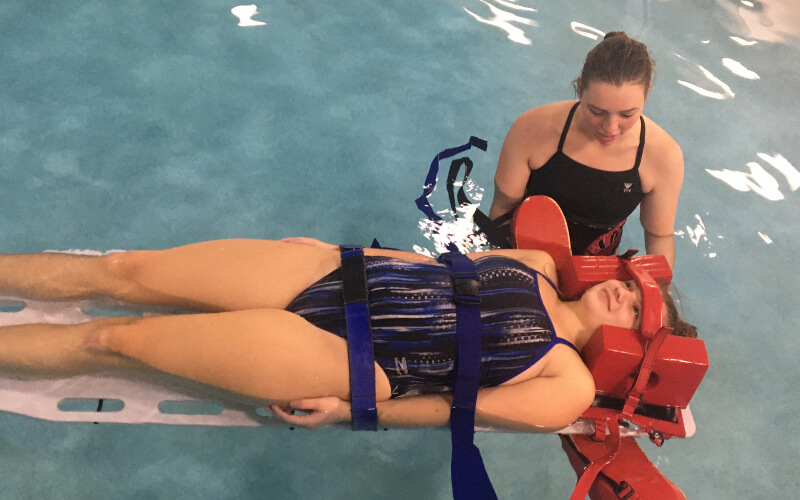
It’s important to note that not all swim schools use lifeguards or teachers certified through the American Red Cross.
In addition to CPR and AED (Automated External Defibrillator) certification, our team receives lifeguard training. This provides education and hands-on training for the following types of rescue:
• Shallow water (5.5 ft or below)
• Assists for a struggling swimmer
• Conscious deep water (5.5 or higher)
• Submerged unconscious swimmers in deep water
• Spinal injuries both in and out of the water
How to perform CPR as Recommended by the American Red Cross
In CPR, clearing the airway, mouth-to-mouth breathing, and chest compression are the three main processes. The American Red Cross uses letters C-A-B (Compressions, Airway, and Breathing). This helps people remember the order of performing CPR during resuscitation.
Untrained – If untrained in CPR, you should provide hands-only resuscitation. This is also suitable for people who have been trained but are rusty in technique. Hands-only CPR translates to 100-120 uninterrupted chest compressions a minute until paramedics arrive. You don’t have to try mouth-to-mouth rescue breathing.
Trained and Ready to Go – If you’re adequately trained and confident in your capabilities, you should begin by checking breathing and pulse. In a situation with no breathing or a pulse within 10 seconds, start chest compressions. Begin CPR with 30 chest compressions, then check the airway and give two mouth-to-mouth rescue breaths.
The above applies to adults, children, and infants in need of CPR. It should not be done on newborns younger than 4 weeks old.
Brief History of Cardiopulmonary Resuscitation
1740 – Paris Academy of Sciences recommends mouth to mouth resuscitation for drowning victims.
1767 – Recovery of Drowned Persons Society was founded in efforts to handle sudden and unexpected deaths.
1891 – Dr. Friedrich Maass became the first to perform unequivocal chest compression in human beings.
1903 – Dr. George Crile reported the success of the external chest compressions in human resuscitation.
1954 – Dr. James Elam became the first physician to prove that expired air was sufficient to maintain adequate oxygenation.
1956 – Dr. Peter Safar and Dr. James Elam invented mouth to mouth resuscitation.
1957 – The United States military uses the mouth to mouth resuscitation method to revive unresponsive victims.
1960 – CPR was developed. The American Heart Association (AHA) initiated a teaching program to educate physicians on closed-chest cardiac resuscitation. They became the forerunners in training CPR for other people.
1966 – The National Research Council ordered an impromptu conference on cardiopulmonary resuscitation (CPR).
The conference was because of requests directly from the American National Red Cross and other agencies to establish a formal training and of CPR.
1972 – Leonard Cobb taught the world’s first mass public CPR training in Seattle, Washington. It was called Medic 2. He trained over 100,000 people during the first two years of the Medic 2 program.
1981 – A program to give over the phone instructions in CPR started in King County, Washington. The plan involved emergency dispatchers giving callers CPR directives until help arrived. Assisted CPR became the standard of care for all dispatcher centers across the US.
1983 – American Health Association held a national conference to develop CPR during pediatric resuscitation. It also gave the pediatric and neonatal patients ECC Guidelines.
2004 – American Health Association and ILCOR released a statement about the administration of AEDs, automated external defibrillators, on children. It determined that an AED may be used for children 1 to 8 years of age who have no circulation signs.
2008 – The American Health Association releases a statement about hands-only CPR. It says that people who witness the collapse of a person should dial 911. They should also provide high-quality chest compressions by pushing hard and fast in the middle of the victim’s chest.
Bottom Line
There are many ways to be a CPR attendant. Around water, being informed saves lives. That’s why Njswim goes to schools and community events to teach water safety to young swimmers and families.
At Njswim, we advocate teaching water safety in public education curriculum. We have worked with elected officials in our communities to share the importance of being safer near water.
All six of our locations offer certification courses to the public. Anyone who would like to obtain a lifeguarding/ CPR, or waterfront lifeguarding/CPR (for lake use) certification is welcome to contact us. The American Red Cross also offers online classes for CPR training.
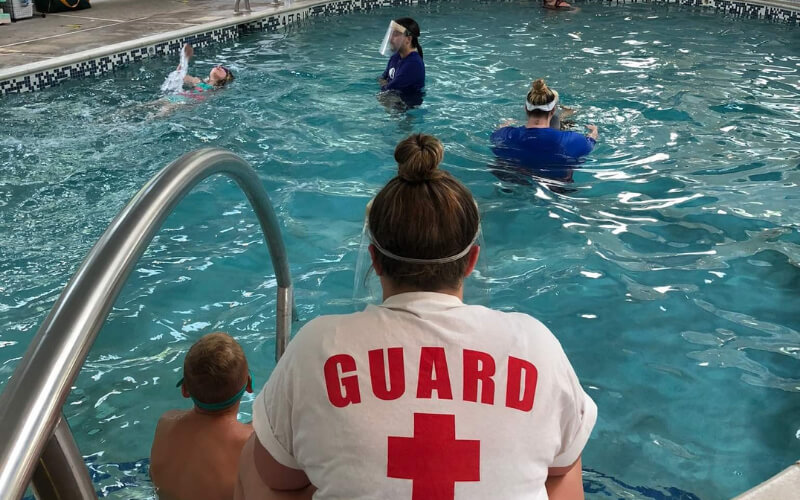
Our swim schools offer quality year-round lessons for all ages and abilities. Learn more about Njswim’s culture and team. You can sign up for our Free Swim Skills Evaluation or contact us for more information.

